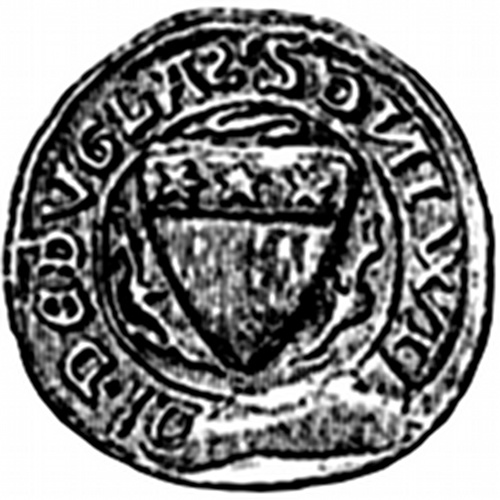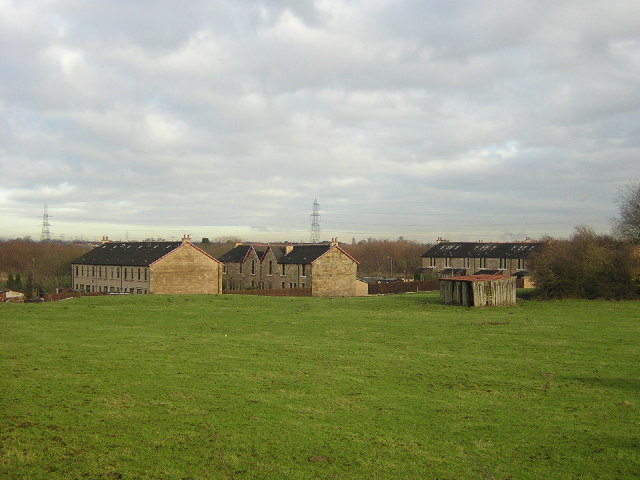|
Drumsagard Castle
Drumsagard Castle, near Cambuslang, South Lanarkshire, Scotland, was a motte and bailey castle which was then built of stone. The castle was the caput of the barony of Drumsagard. Drumsagard was held in the 13th century by the Oliphant family, before it passed by marriage to the de Moravia family. It passed to the Douglas family in 1362 by the marriage of Archibald Douglas, Earl of Douglas to Johanna, daughter of Thomas Moray of Bothwell. The Hamilton family The Hamiltons of the United States are a family of Scottish origin, whose most prominent member was Alexander Hamilton (1755/57–1804), one of the Founding Fathers of the United States. Their ancestors and relations in Scotland included the Lai ... were granted the lands in 1452. Drumsagard was ruinous by 1796, and the stone used to build the nearby Hallside Farms. [...More Info...] [...Related Items...] OR: [Wikipedia] [Google] [Baidu] |
Cambuslang
Cambuslang ( sco, Cammuslang, from gd, Camas Lang) is a town on the south-eastern outskirts of Greater Glasgow, Scotland. With approximately 30,000 residents, it is the 27th largest town in Scotland by population, although, never having had a town hall, it may also be considered the largest village in Scotland. It is within the local authority area of South Lanarkshire and directly borders the town of Rutherglen to the west. Historically, it was a large civil parish incorporating the nearby hamlets of Newton, Flemington, Westburn and Halfway. Cambuslang is located just south of the River Clyde and about southeast of the centre of Glasgow. It has a long history of coal mining, from at least 1490, iron and steel making, and ancillary engineering works, most recently The Hoover Company (in the town from 1946 to 2005). The Clydebridge Steelworks and other smaller manufacturing businesses continue but most employment in the area comes from the distribution or service industrie ... [...More Info...] [...Related Items...] OR: [Wikipedia] [Google] [Baidu] |
South Lanarkshire
gd, Siorrachd Lannraig a Deas , image_skyline = , image_flag = , image_shield = Arms_slanarkshire.jpg , image_blank_emblem = Slanarks.jpg , blank_emblem_type = Council logo , image_map = , map_caption = , coordinates = , seat_type = Admin HQ , seat = Hamilton , government_footnotes = , governing_body = South Lanarkshire Council , leader_title = Control , leader_name = Labour minority (council NOC) , leader_title1 = MPs , leader_name1 = *David Mundell (Dumfriesshire, Clydesdale and Tweeddale) *Lisa Cameron ( East Kilbride, Strathaven and Lesmahagow) *Angela Crawley (Lanark and Hamilton East) *Margaret Ferrier (Rutherglen and Hamilton West) , subdivision_type = Sovereign state , subdivision_name = United Kingdom , subdivision_type1 = , subdivisio ... [...More Info...] [...Related Items...] OR: [Wikipedia] [Google] [Baidu] |
Clan Oliphant
Clan Oliphant is a Highland Scottish clan. History Origins of the clan Although this remains the subject of ongoing research the earliest member of this Clan known to date is Roger Olifard, who witnessed a foundation charter to the Clunic priory of St. Andrew's, Northampton, by Earl Simon. The Charter was dated between 1093 and 1100 and Roger himself made a grant of 3 shillings yearly to this priory. One theory claim that Oliphants were of French origin who by the twelfth century held lands around Northamptonshire in England. In Domesday, Northamptonshire, there is a mention of "In Lilleford, Willelmus Olyfart", which land was held of the Countess Judith. Also in the ''Pipe Roll'', 31 Hen. I is mention of a William Olifard of Northamptonshire as well as a Hugh Olifard of Huntingdonshire. William held five hides in Lilford (Lilleford) of the fee of the King of Scotland while Hugh Olifard of Stokes was a knight in the service of the Abbot of Petersborough before 1120; both appe ... [...More Info...] [...Related Items...] OR: [Wikipedia] [Google] [Baidu] |
Clan Murray
Clan Murray () is a Highland Scottish clan. The chief of the Clan Murray holds the title of Duke of Atholl. Their ancestors were the Morays of Bothwell who established the family in Scotland in the 12th century. In the 16th century, descendants of the Morays of Bothwell, the Murrays of Tullibardine, secured the chiefship of the clan and were created Earls of Tullibardine in 1606. The first Earl of Tullibardine married the heiress to the Stewart earldom of Atholl and Atholl therefore became a Murray earldom in 1626. The Murray Earl of Atholl was created Marquess of Atholl in 1676 and in 1703 it became a dukedom. The marquess of Tullibardine title has continued as a subsidiary title, being bestowed on elder sons of the chief until they succeed him as Duke of Atholl. The Murray chiefs played an important and prominent role in support of William Wallace and Robert the Bruce during the Wars of Scottish Independence in the 13th and 14th centuries. The Murrays also largely supported the ... [...More Info...] [...Related Items...] OR: [Wikipedia] [Google] [Baidu] |
Clan Douglas
Clan Douglas is an ancient clan or noble house from the Scottish Lowlands. Taking their name from Douglas in Lanarkshire, their leaders gained vast territories throughout the Borders, Angus, Lothian, Moray, and also in France and Sweden. The family is one of the most ennobled in the United Kingdom and has held numerous titles. The Douglases were one of Scotland's most powerful families,Way, George and Squire, Romily. (1994). ''Collins Scottish Clan & Family Encyclopedia''. (Foreword by The Rt Hon. The Earl of Elgin KT, Convenor, The Standing Council of Scottish Chiefs). pp. 384 – 385. and certainly the most prominent family in lowland Scotland during the Late Middle Ages, often holding the real power behind the throne of the Stewart Kings . The heads of the House of Douglas held the titles of the Earl of Douglas (Black Douglas) and later the Earl of Angus (Red Douglas). The clan does not currently have a chief recognised by the Lord Lyon. The principal Douglas today is the ... [...More Info...] [...Related Items...] OR: [Wikipedia] [Google] [Baidu] |
Archibald Douglas, 3rd Earl Of Douglas
Archibald Douglas, Earl of Douglas and Wigtown, Lord of Galloway, Douglas and Bothwell (c. 1330 – c. 24 December 1400), called Archibald the Grim or Black Archibald, was a late medieval Scottish nobleman. Archibald was the bastard son of Sir James "the Black" Douglas, Robert I's trusted lieutenant, and an unknown mother. A first cousin of William 1st Earl of Douglas, he inherited the earldom of Douglas and its entailed estates as the third earl following the death without legitimate issue of James 2nd Earl of Douglas at the Battle of Otterburn. Early life He was probably not yet born when his father went on crusade and was killed at the Battle of Teba whilst fighting the Moors. According to Walter Bower, possibly an insult regarding his illegitimacy, ''"He was dark and ugly more like a coco ook-boythan a Noble."'' Jean le Bel in his chronicle describes Douglas, as an adult, as a large man capable of wielding a huge sword. It has been suggested that the young Archibald ... [...More Info...] [...Related Items...] OR: [Wikipedia] [Google] [Baidu] |
Clan Hamilton
The Clan Hamilton, or House of Hamilton, is a Scottish clan of the Scottish Lowlands.Way, George and Squire, Romily. ''Collins Scottish Clan & Family Encyclopedia''. (Foreword by The Rt Hon. The Earl of Elgin KT, Convenor, The Standing Council of Scottish Chiefs). Published in 1994. Pages 160–161. History Origins of the house The Hamilton chiefs descend from Walter fitz Gilbert of Hambledon who appears in a charter to the Monastery of Paisley in about 1294. His lands appear to have originally been in Renfrewshire, however, his support for Robert the Bruce rewarded him with lands in Lanarkshire and the Lothians These lands included Cadzow, which later became the town of Hamilton, South Lanarkshire. Wars of Scottish Independence As already mentioned Walter Fitz Gilbert was rewarded with lands for his support of king Robert the Bruce. Walter's son, David, fought at the Battle of Neville's Cross for David II of Scotland in 1346. David was captured and was not released until ... [...More Info...] [...Related Items...] OR: [Wikipedia] [Google] [Baidu] |
Drumsagard Village
Drumsagard Village is a new construction village in Cambuslang, South Lanarkshire. It is built around the site of Drumsagard Castle and immediately south of the site of Hallside Steelworks, also known as the Cambuslang Iron and Steel Works. One of the first facilities of their kind and eventually extending over an area of around 33 acres, the steelworks were established in 1873 and closed in 1979. History The Parish of Cambuslang in the Barony of Drumsargard, also spelt Drumsagart, meaning "ridge of the priest" – can be traced back to the time of King Alexander II of Scotland (1214–49) when it belonged to Walter Olifard, Justiciar of Lothian. The Barony of Drumsargard (whose castle ruins can be discerned to the south-east of Hallside although none of the structure itself now remains) passed to Archibald Douglas, 3rd Earl of Douglas in 1370, as part of the settlement in his marriage to Johanna, daughter of Thomas Moray of Bothwell. In 1452 the Douglases were displaced in ... [...More Info...] [...Related Items...] OR: [Wikipedia] [Google] [Baidu] |
Castles In South Lanarkshire
A castle is a type of fortified structure built during the Middle Ages predominantly by the nobility or royalty and by military orders. Scholars debate the scope of the word ''castle'', but usually consider it to be the private fortified residence of a lord or noble. This is distinct from a palace, which is not fortified; from a fortress, which was not always a residence for royalty or nobility; from a ''pleasance'' which was a walled-in residence for nobility, but not adequately fortified; and from a fortified settlement, which was a public defence – though there are many similarities among these types of construction. Use of the term has varied over time and has also been applied to structures such as hill forts and 19th-20th century homes built to resemble castles. Over the approximately 900 years when genuine castles were built, they took on a great many forms with many different features, although some, such as curtain walls, arrowslits, and portcullises, were ... [...More Info...] [...Related Items...] OR: [Wikipedia] [Google] [Baidu] |
Motte-and-bailey Castles
A motte-and-bailey castle is a European fortification with a wooden or stone keep situated on a raised area of ground called a motte, accompanied by a walled courtyard, or Bailey (castle), bailey, surrounded by a protective Rampart (fortification), ditch and palisade. Relatively easy to build with unskilled labour, but still militarily formidable, these castles were built across northern Europe from the 10th century onwards, spreading from Normandy and County of Anjou, Anjou in France, into the Holy Roman Empire in the 11th century. The Normans introduced the design into England and Wales. Motte-and-bailey castles were adopted in Scotland, Ireland, the Low Countries and Denmark in the 12th and 13th centuries. Windsor Castle, in England, is an example of a motte-and-bailey castle. By the end of the 13th century, the design was largely superseded by alternative forms of fortification, but the earthworks remain a prominent feature in many countries. Architecture Structures A mott ... [...More Info...] [...Related Items...] OR: [Wikipedia] [Google] [Baidu] |

.png)



